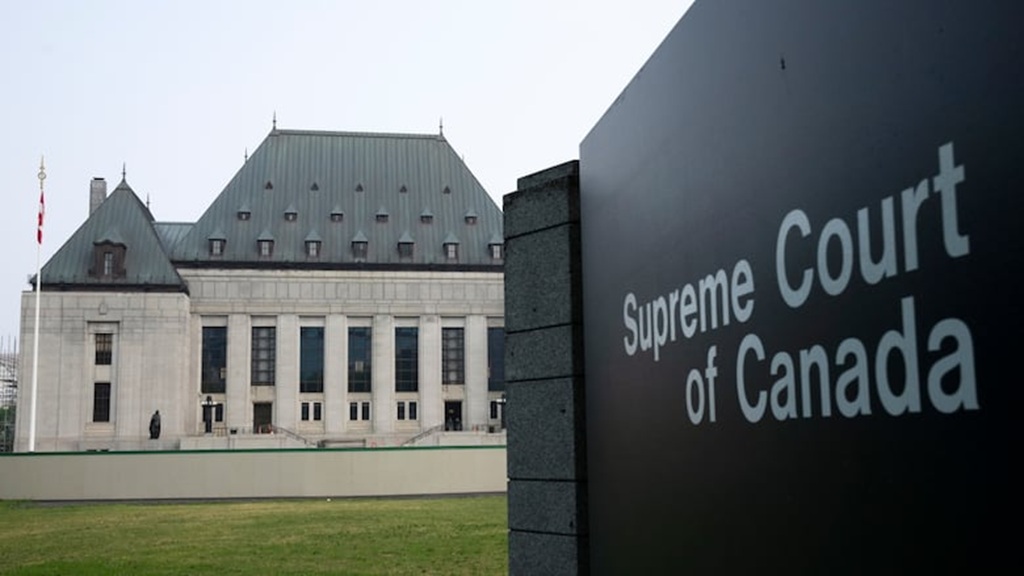Canadians have come to expect reliable care from the public healthcare system, but talk about private options is louder than ever. People see packed emergency rooms, long wait times, and millions still searching for a family doctor. It’s no surprise more are asking if private healthcare could help.
New clinics, changing government policies, and provincial experiments with private services are sparking real debate. While public funding remains the foundation, many Canadians wonder how private care fits into the future—and what it might mean for quality, access, and fairness. This post looks at why support for private healthcare is growing, who’s driving it, and what it could mean looking ahead.
The Shifting Landscape: Why Private Healthcare is Gaining Support in Canada
As Canada faces serious strains on its public health infrastructure, interest in private healthcare options isn’t just growing—it’s rapidly becoming part of everyday discussion. Growing wait times, staffing shortages, regional gaps, and political gridlock are leading more Canadians to ask if private clinics and services could fill the gaps. Here’s what’s driving this major change in public opinion.
Rising Wait Times and Staffing Shortages
Long wait times for common procedures, surgeries, and specialist consultations have become an everyday concern for Canadians. More people are experiencing the delays first-hand, whether for themselves or loved ones—they see specialists booking months in advance or operating room backlogs that stretch for weeks.
- Statistics highlight the pressure: Recent data emphasise that wait times for specialist care in Canada have gotten worse, especially compared to other developed countries. Many referrals for essential procedures, from MRIS to orthopaedic surgeries, push patients to wait longer than expected. For a closer look at wait time trends, refer to this detailed summary on speciality care delays.
- Staffing shortages create bottlenecks: It’s not just the number of people in need; it’s the shrinking healthcare workforce, too. Doctors, nurses, and allied professionals are stretched thin, often burning out or leaving the sector altogether. Shortages impact access at every level, closing clinics and worsening emergency room backups. In a recent CBC survey, thousands across the provinces voiced widespread frustration with finding a family doctor and timely care.
- Daily impact: Canadians now expect delays—even for urgent needs. Stories of waiting hours in the ER or months for diagnostic tests are a new normal. Communities hit hardest by staff shortages often find private clinics popping up as an alternative, sometimes the only way to get timely treatment.
Public Attitudes and Recent Polls
Canadians have traditionally championed public healthcare, but attitudes are shifting. Growing frustration with access is making the public more open to reforms—and even private solutions once seen as taboo.
- Polling reveals a clear change: According to recent national polling, 56% of Canadians now back increasing access to non-governmental healthcare providers. This is a notable jump compared to previous years, signifying a tangible appetite for alternatives outside the status quo. More details on these findings are available in the MEI-Ipsos poll results.
- Regional and demographic patterns:
- Support for private care is higher in provinces facing the longest wait times or seeing major hospital closures. For instance, Western provinces and parts of Ontario report greater interest in private clinics than most of Atlantic Canada or Quebec.
- Younger adults and parents, who are more likely to need regular primary care, increasingly support faster alternatives—even if it means paying out of pocket in some cases.
- People over age 65 remain more cautious about private options, though their views are slowly shifting as frustrations rise within senior populations.
- General satisfaction is mixed: While just over half (56%) are still satisfied with their current provincial system, this number has dipped in regions experiencing the worst shortages. Even satisfied users often worry about future care access for their families. These insights come from a 2025 report on Canadian healthcare satisfaction.
Political and Economic Drivers
Healthcare debates in Canada are always tied to politics and economic realities. Provincial and federal leaders frame private care as either a needed fix or a threat—but all face mounting cost pressures and voter frustration.
- Provincial governments act as decision-makers: Some provinces, like Alberta and Ontario, are expanding options for privately delivered—but publicly funded—surgery and diagnostics. These policies are justified as efforts to shorten waits and reduce backlogs. Others, meanwhile, remain firmly committed to public delivery, wary about “two-tier” concerns.
- Party positions are evolving: Political parties are adjusting their stances as the mood shifts. Even traditionally sceptical leaders now seek compromise, piloting private diagnostics or letting doctors work part-time in private clinics to address staff shortages. Upcoming provincial elections have put private healthcare at the centre of campaign promises.
- Economic pressures mount: Rising healthcare costs, an ageing population, and the after-effects of the pandemic are straining provincial budgets. Private clinics and services are pitched as ways to reduce system overloads, at least for those who can pay or have insurance. For many leaders, widening the space for private options is both a strategy and a necessity as traditional funding struggles to keep up.
This dramatic shift isn’t just about impatience or policy debates—it’s about people feeling let down by a system under immense stress, and looking for new answers wherever they can find them.
Recent Developments in Canada’s Private Healthcare Sector
The private healthcare sector in Canada is changing fast. People see more clinics opening, new ways to get care, and bigger roles for private insurance. Federal and provincial governments are rethinking rules that shape what private providers can do. There’s a real push to close the gaps left by the strained public system. Let’s break down what’s new and what it means for everyday Canadians.
Growth of Private Clinics and Services
Private clinics offering outpatient surgery, diagnostic imaging, and even virtual visits are multiplying across Canada. Once rare, these clinics now serve a growing number of patients who want faster access or who can’t get timely care through the public system.
Key trends and highlights:
- Surgical centres and imaging clinics: The number of private clinics focused on same-day surgeries and advanced imaging (like MRIS and CT scans) keeps rising. People use these clinics to skip long waitlists in the public system, especially in bigger cities. Recent studies detail how this growth is picking up steam and showing a shift in where care happens. For a closer look, see the explosive growth of private clinics.
- Virtual care: New telehealth services let people meet doctors and nurse practitioners online. This means even people far from city hospitals can get advice, prescriptions, or basic care without leaving home. These digital services grew fast during the pandemic and remain popular with busy families and those in rural areas.
- Non-physician professionals: To fill gaps left by physician shortages, more clinics now rely on nurse practitioners, physician assistants, and therapists. New rules and investments in some provinces encourage these practitioners to offer expanded services, including direct prescription and diagnosis.
- Impact on access and outcomes: Faster access is a major draw for private clinics. People skip long waits for non-emergency care like cataract removal or joint replacement. But this comes with debate—some experts warn private options could make doctor shortages worse in public hospitals. Still, for many, having an option (even if out-of-pocket) feels like a lifeline.
Innovative service models and new clinics aren’t just a trend—they’re now a bigger part of how Canadians get care. Creative approaches to primary care are shaping this shift, as outlined in recent discussions of innovative care solutions for Canada’s healthcare crisis.
Changing Role of Private Health Insurance
Private health insurance has always filled some gaps, but now it’s doing even more. Workplace plans, individual policies, and direct-pay options are helping Canadians pay for things that aren’t fully covered by public plans.
Key developments in insurance include:
- Growing demand: With more private clinics and services, people are buying private insurance to cover extra costs, from prescription drugs to dental work, vision care, and private therapy. Employer benefits remain the most common way to get covered, but personal plans are rising too.
- Coverage gaps: Public health insurance does not pay for most prescription drugs (outside hospitals), dental visits, and many mental health services. People use private insurance to close these gaps, especially for treatments that require faster access or aren’t available in their province.
- Recent policy shifts: Federal and provincial lawmakers are updating rules. For example, efforts to bring in national pharmacare (full drug coverage) could shrink the market for private drug plans but expand coverage for those currently left out. New interpretations of what counts as an “insured service” also shift what private insurance can support—see insights from the latest policy changes on the Canada Health Act.
- Who’s covered: About 60% of Canadians have some private coverage, mostly through employers, according to a detailed analysis of private health insurance in Canada. Uptake is highly stable, but new trends could change how useful and affordable these plans are for people needing more than the basics.
Canadians are leaning on insurance to keep care in reach. Changing rules and new programs could reshape how much people rely on private versus public plans shortly. Forecasts suggest coverage numbers are stable or even ticking up, with new options coming out each year, as seen in the latest insurance projections.
Provincial Variations and Regulatory Approaches
Not every province treats private healthcare the same way. Some see private clinics and insurance as tools to fix gaps, while others stick tightly to public services and strong limits on private sector growth.
A closer look at provincial differences:
- Enabling private care: Ontario and Alberta are the most active in expanding private provision, opening the door for more outpatient surgeries and diagnostics at clinics run by private providers but paid for by the province. These changes aim to shorten backlogs and ease pressure on hospitals, though critics worry about fairness and access for lower-income families.
- Restricting growth: Quebec and many Atlantic provinces remain more cautious. They rely on strong rules to limit which procedures can be offered in private settings and what kinds of insurance are legal. Concerns about a “two-tier system” drive much of this resistance.
- Proactive policy-making: Some provinces now support nurse practitioners as independent care providers or create pilot projects with private partners to bring care to underserved communities. Others invest more in public clinics and better funding for primary care teams to cut down on need for private options.
- Regulatory shifts: Updates to federal law and new guidance for the Canada Health Act have forced provinces to revisit their health laws. Each province weighs its priorities: more choice and fast care, or tighter control to protect equity. Insights on these recent legislative changes are outlined in a recent legal outlook on healthcare access.
Because healthcare is mostly under provincial control, Canadians’ experiences with private care vary a lot. What works in Toronto or Calgary may look different than in Montreal or Halifax. Provinces will keep choosing their balance, and as policies change, patients are watching closely to see what works best.
Impacts and Controversies: What Growing Private Healthcare Means for Canadians
Support for private healthcare is bringing both hope and hesitancy across Canada. People see more private clinics as a fix for stressful waits, but not everyone agrees about who wins or loses from these changes. Understanding both sides helps put the current debate in sharp focus for Canadians seeking better, fairer care.
Potential for Improved Access and Innovation
Advocates for private healthcare highlight a few big points. They say private options take pressure off crowded hospitals and clinics, giving patients faster tests and surgeries when public lines are too long. This isn’t just speculation—many private clinics now let people book MRIS or day surgeries within days or weeks, rather than months.
Here’s what supporters claim private care can do:
- Shorter wait times: Private providers help clear public backlogs, letting more people get care when they want it. Patients who can pay jump to private clinics for knee replacements or diagnostic scans if public lists stretch too long. Some experts note this can clear space for urgent cases in the public system. You can read more about why some Canadians opt for private care in this simple breakdown of public vs. private healthcare access.
- New technology and service models: Private clinics often have the freedom to try new equipment, offer virtual care, and attract top medical talent. They can respond faster to patient preferences and market demand—think expanded telemedicine, weekend appointments, and same-day service.
- Choice for patients: The rise of private clinics gives Canadians more ways to get care. Someone stuck on a years-long waitlist for a hip replacement now has an option—sometimes less affordable, but in many people’s eyes, more responsive.
- Pressure for public sector improvement: Fans of private care argue that healthy competition can force public hospitals and clinics to innovate, improve, and focus on quality.
Some provinces, especially Ontario, have leaned hard into these arguments, directing public dollars to private clinics for certain procedures to shrink waitlists faster. A recent look at Ontario’s approach points to evidence of shorter wait times and new care pathways. But any gains come with key debates about who benefits and who risks being left behind.
Concerns About Equity and Two-Tier Health Care
Growing support for private healthcare also sparks real fears—mainly about fairness. Critics warn that more private clinics and extra billing open the door to two-tier medicine, where wealthier Canadians get better care and faster treatment while others wait.
Key worries include:
- Erosion of universality: Public healthcare is built on a commitment that everyone gets care based on need, not income. Critics say expanding private options risks breaking this promise if only some can afford to pay, especially as private spending rises and public dollars get stretched thinner.
- Risk of pro-rich access: Research finds that as private services grow, wealthier Canadians are indeed more likely to see specialists, dentists, and even family doctors sooner than others. This recent study on equity in Canadian healthcare found pro-rich gaps in access across provinces, raising tough questions about fairness.
- Staffing shifts and resource drain: When doctors, nurses, and therapists move to better-paid private jobs, public clinics can lose skilled staff, causing delays for everyone else.
- Community trust and public values: Many Canadians see two-tier care as a challenge to shared values—those that built Medicare in the first place.
Recent debates over private equity in health services show how higher costs and uneven care outcomes can result when business motives drive patient care, as explored in this summary of private equity’s healthcare role. These cases highlight just how complicated it can get when profit and patient need mix.
Legal and Policy Challenges
Expanding private healthcare isn’t just a social or moral issue—it’s also tangled up with laws and government policies at every level.
Ongoing challenges include:
- Constitutional showdowns: Several court cases test whether it’s legal to restrict access to private care when public wait times are unreasonable. The famed Chaoulli decision in Quebec set a precedent, but most other provinces still tightly regulate private payments for medically necessary care.
- Federal-provincial push and pull: Ottawa sets the tone with the Canada Health Act, which bans user fees and billing for insured services. But provinces deliver health care, and some, like Alberta or Ontario, stretch interpretations to let private clinics offer more while still claiming public funds. The debate over what counts as a covered service and how much private insurance people can buy keeps the legal waters muddy. Insights on the current state of legal debates are available through the Canadian Medical Association’s overview.
- New rules for providers and insurers: Provinces pass new laws or launch pilot programs to allow private delivery of publicly funded services, sometimes resulting in legal battles between levels of government. Federally, talks about universal pharmacare or dental coverage could reshape which services private insurance and clinics can offer.
Canadian policy remains unsettled. Legal experts and patient advocates watch closely as provinces test the limits—and as courts weigh in on what private care means for fairness, access, and the future of Medicare itself.
These ongoing disputes and shifting laws shape how far private care can go, and what it means for people across the country. Each change to the law or new court ruling influences not only access and wait times but also the values underpinning Canada’s healthcare system.
Support for private healthcare in Canada is growing as people face tough realities in the public system. Many see private clinics and new insurance options as a way to clear waitlists and bring in fresh ideas, but others worry this could weaken fairness and leave some behind.
The debate centres on finding a balance between faster access and protecting the principle of universal care. With new policies and digital health tools on the rise, Canada is testing how to improve care without giving up on equity.
How well provinces manage this mix will shape both patient experiences and public trust. As political and economic forces shape the next chapter, staying focused on shared values—and watching how solutions play out in real life—matters most.
Related News:
Canada’s Frontline Workers Report the Healthcare System is in Crisis













